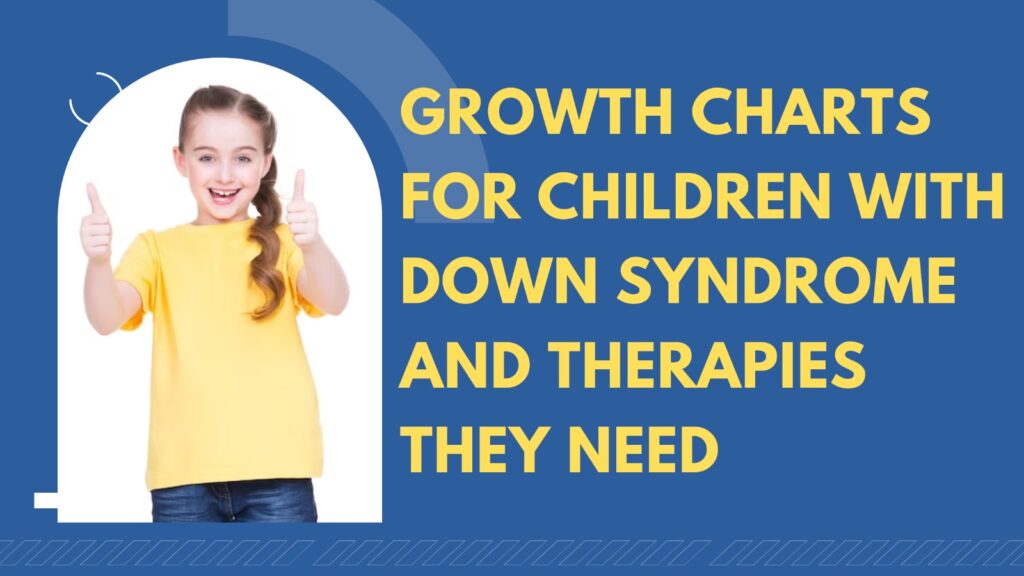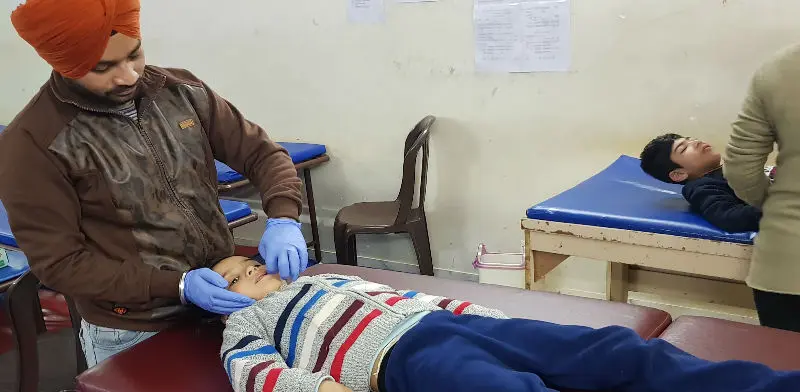Children with Down syndrome achieve developmental milestones at a different rate than children without this condition. The Centers for Disease Control and Prevention (CDC) has shared growth charts for children with Down syndrome so that Down syndrome therapies centers and healthcare providers can monitor their growth. These charts allow them to do a comparative analysis between a child with Down syndrome and peers of the same age.
In this blog, we will discuss Growth Charts for Children with Down syndrome along with helpful Down Syndrome Therapies that can make significant improvements in the lives of these children.
Before you learn about Growth Charts and DS therapies, it will be helpful for you to know the common physical symptoms of Down syndrome.
Common Growth-Related Symptoms in Children with Down Syndrome
While children with Down syndrome have many cognitive and behavioral symptoms that become more apparent as they grow, these children exhibit the following physical symptoms that are usually visible since birth.
- A short neck
- Small ears, hands, and feet
- Shorter-than-average height
- A flat nose bridge
- Upward slant in the eyes
Growth Charts for Children with Down Syndrome and Their Uses
Growth Charts serve as important tools to perform growth analysis during the medical care of children with specific syndromes. Typically, children with Down syndrome have short height and may suffer from a variety of disorders such as hypothyroidism, coeliac disease, and growth hormone deficiency, which further retard their growth.
Hence, using growth charts is necessary for healthcare providers to detect additional growth deviation.
How to Read Growth Charts for Children with Down Syndrome
Growth charts help you understand how the weight/height of a child with DS compares to children (of the same age and sex) without DS. Below, we have shared the charts for children with age 2-20 years.
- To read the weight/height chart of your child, locate the age of your child on the horizontal axis (X-axis). The age may be in months or years.
- To determine the weight/height, find the vertical line that corresponds to your child’s age and follow it to the point where it intersects with the curve or line that represents the weight/height.
- You will notice percentiles marked at regular intervals such as 5th, 10th, 15th, 20th, 25th, and so on. This percentile shows the percentage of children in the reference population who have a weight/height equal to or less than the measured weight/height of your child.
For instance, if your child’s weight/height is at the 55th percentile, it means your child weighs more/ is taller than 55% of children of the same age and sex who have the same condition.
Growth Charts for Boys with Down Syndrome (2 to 20 Years)
Weight Chart for Boys with Down Syndrome
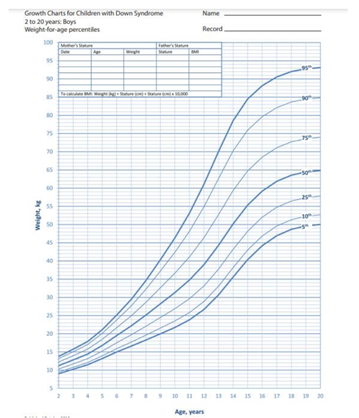
Source: Centers for Disease Control and Prevention
Height Chart for Boys with Down Syndrome
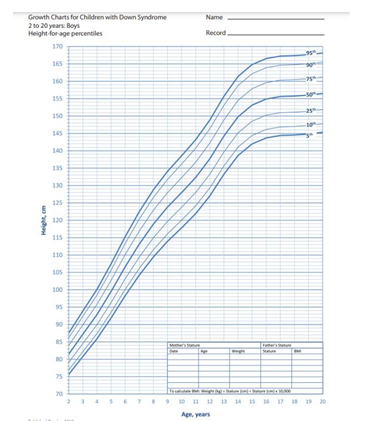
Growth Charts for Girls with Down Syndrome (2 to 20 Years)
Weight Chart for Girls with Down Syndrome
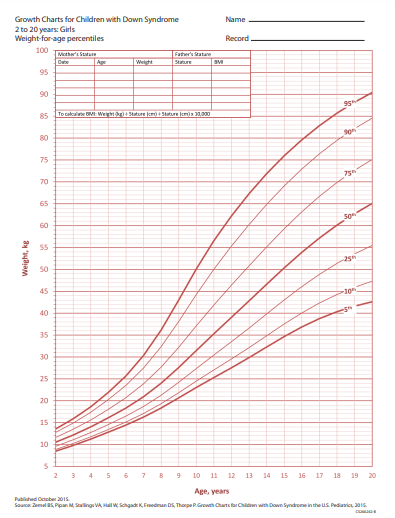
Height Chart for Girls with Down Syndrome
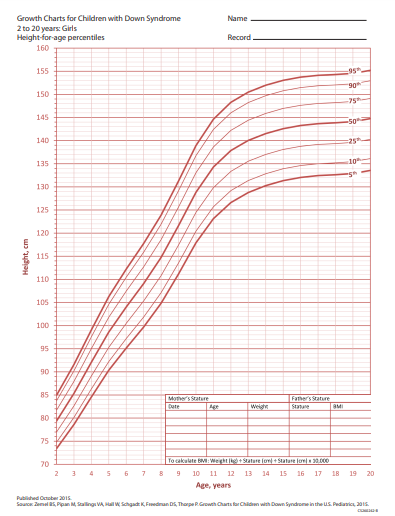
You can also check the head circumference chart provided by the healthcare provider of your child the same way.
Down Syndrome Therapies Your Child Can Benefit From
Though Down’s syndrome is a lifelong condition and has no cure, there are many Down Syndrome Therapies that can improve their development and growth and live a better life.
Occupational therapy
Occupational therapy is often recommended to improve overall development and daily functioning in children with Down’s syndrome. Here are some of the top benefits of occupation therapy for children with Down’s syndrome.
- Help build self-care skills such as dressing, grooming, and feeding
- Improve fine motor skills, such as grasping objects, using utensils, and writing
- Enable to process and respond to the environment stimulus
- Enhance social skills and expand their imagination
- Improve memory, attention, and problem-solving
- Prepare them for the school environment
Speech Therapy
Speech therapy, also called speech-language therapy, is one of the most crucial Down syndrome therapies. As children with DS often face troubles in speech and language development, speech therapy enables them to speak clearly, communicate with others, and understand the language. Here are different ways speech therapy can help children with DS:
- Help your child articulate sounds clearly
- Develop expressive and receptive language (processing spoken speech) skills
- Expand your child’s vocabulary
- Improve social communication skills, such as turn-taking, making requests, and engaging in conversations
- Improve fluency and manage their stuttering
Physiotherapy
Physiotherapy, also called physical therapy, can help address physical challenges in children with Down syndrome and promote overall motor development. Here is how physiotherapy can help children with DS:
- Improve motor skills, such as crawling, walking, running, jumping, and climbing
- Support the development of hand-eye coordination, which is important for tasks such as writing, drawing, and self-care
- Enhance their muscle tone and overall strength
- Improve balance coordination
- Increase flexibility and the range of motion in joints
- Enable a child to perform daily activities independently
Do you want your child with Down syndrome to get the best Down syndrome treatment? Call IIAHP at +91-7419502101 or write to us at info@iiahp.com to get more information on world-class Down syndrome therapies and how we can help your child live an independent life.



